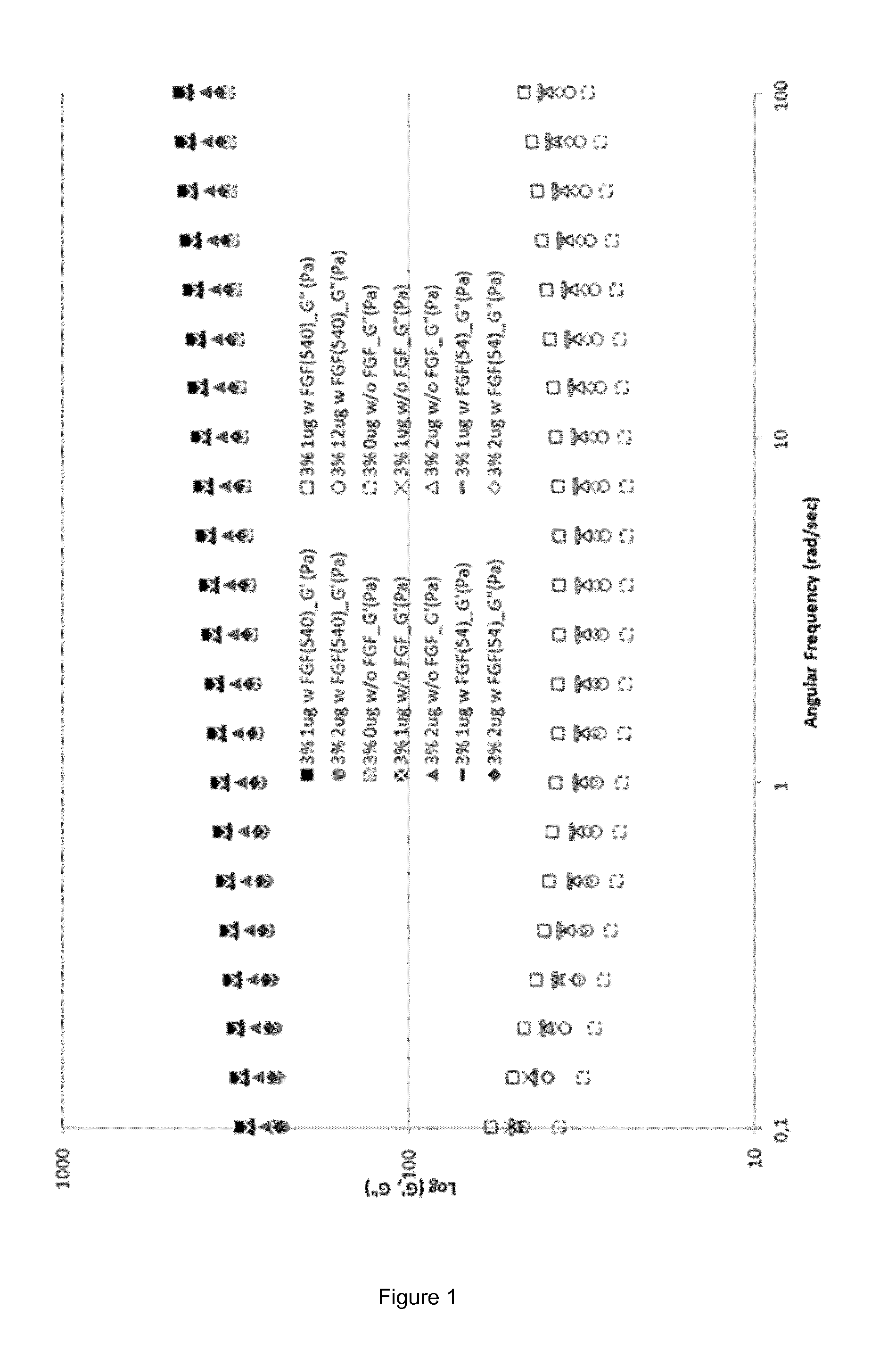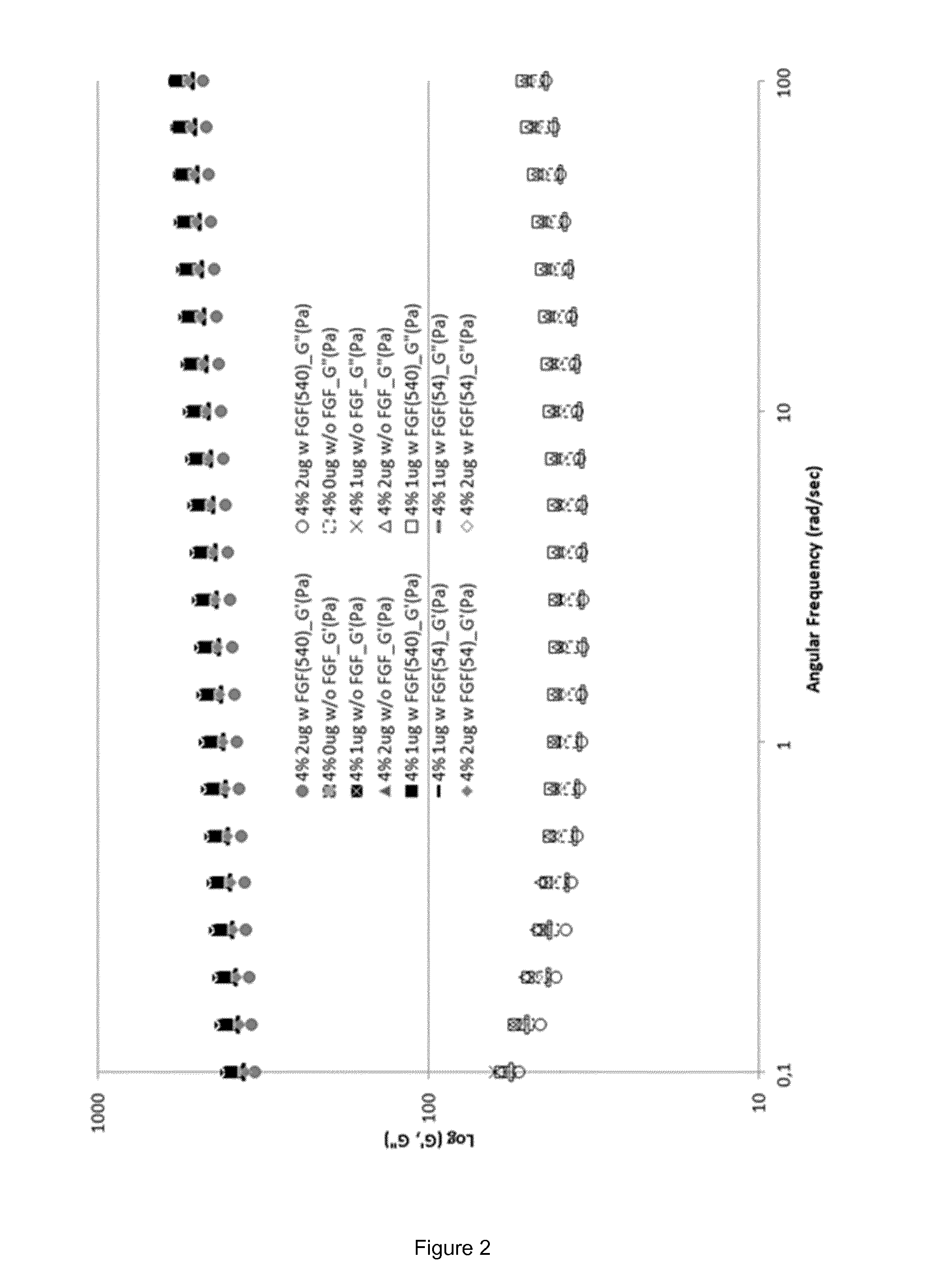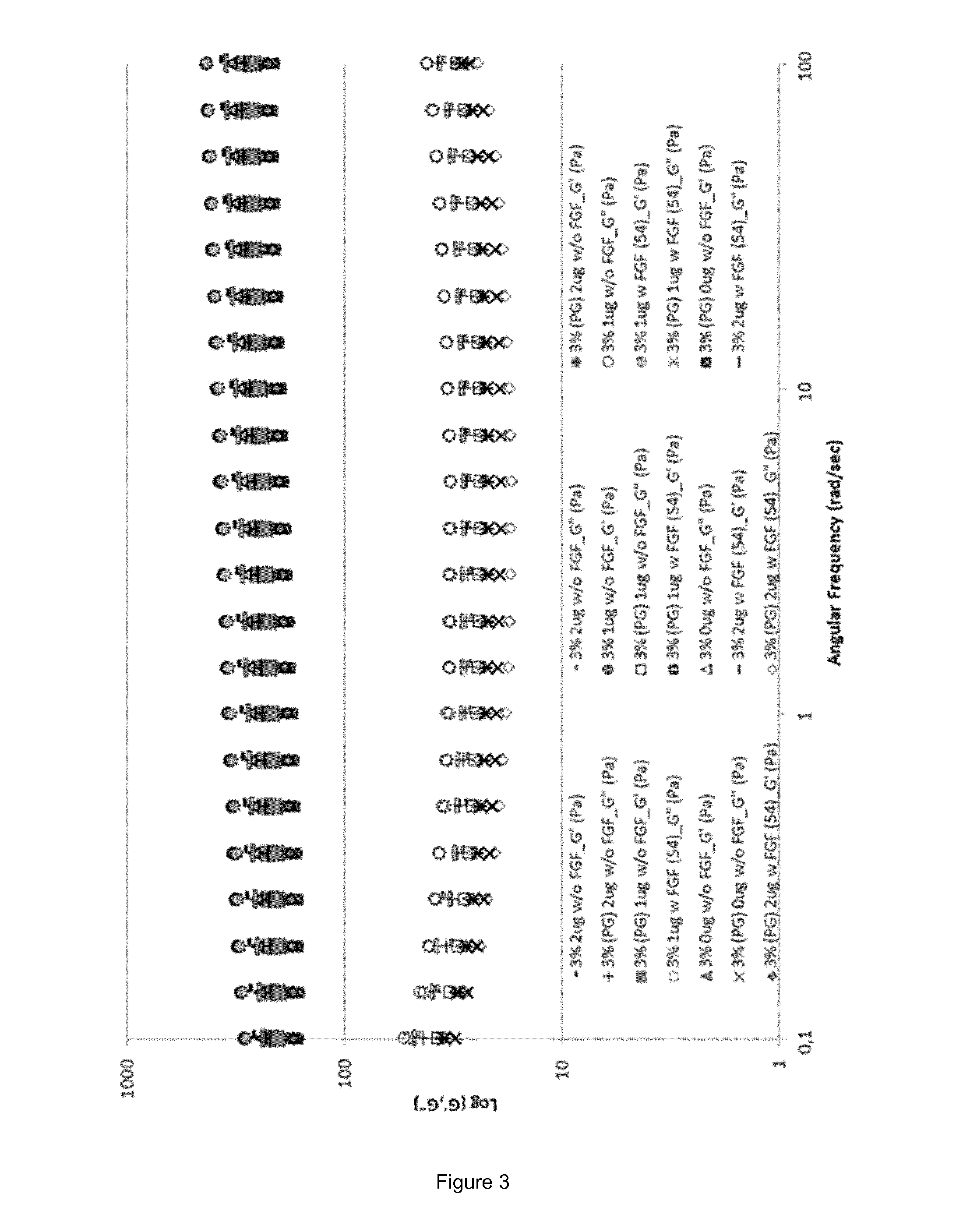Fgf-18 formulation in alginate/collagen hydrogels
a technology of collagen hydrogel and fibroblast growth factor, which is applied in the direction of prosthesis, drug composition, pharmaceutical delivery mechanism, etc., can solve the problems of reduced joint mobility, loss of activity/stability of protein, and unwanted effects
- Summary
- Abstract
- Description
- Claims
- Application Information
AI Technical Summary
Benefits of technology
Problems solved by technology
Method used
Image
Examples
example 1
Preformulations
[0143]During the pre-formulation work either alginate or chitosan were mixed with other excipients in order to obtain aqueous solutions with an acceptable osmolality for i.a. injections (target: 350 mOsm / Kg). The liquid solutions were, then, tested for their gelation time and temperature. Formulations able to form hydrogels within 5 minutes and / or at a temperature around 37° C. were further formulated with FGF-18 at different concentrations (data not shown).
example 2
Preparation of Ion-Responsive Gels (Alginate)
[0144]Generalities
[0145]Sodium alginate was used to obtain an ions-responsive gel, as in presence of divalent cations working as cross-linking agent between the polymer chains, such as Ca2+, it is able to form a polymeric network giving rise to a hydrogel. The formulation consisted of two solutions, one containing the polymer and the other one containing the ions. Once mixed together, the solutions formed a gel.
[0146]The calcium solution was the same for both placebo and active gels and consisted of a solution of calcium chloride CaCl2 in milliQ water at a concentration of 10 mg / mL. In the polymer liquid solution, in addition to alginate, collagen type I and the active molecule were added (here, sprifermin), as well as sucrose for adjusting the osmolality value. Placebo polymer liquid solution was prepared as follows: a solution of sucrose in milliQ water at a concentration of 70 mg / mL was prepared and used to dissolve sodium alginate at ...
example 3
Preparation of Temperature-Responsive Gels (Chitosan)
[0164]Generalities
[0165]For the screening of chitosan formulations, the preparation of the polymer liquid solutions made use of three different chitosans: 95% deacetylation degree (DD) with high molecular weight (HMW), 95% DD with low MW (LMW) and 75% DD with high MW (HMW). Polymer liquid solutions were prepared by adding gradually the chitosan to a solution of acetic acid 0.1 N under vigorous stirring at either 5° C. or at 25° C. The amount of polymer was calculated to have a final polymer concentration in the polymer liquid solution of 1% wt, 1.5% wt or 2% wt. Once chitosan was completely solubilised, a solution of KH2PO4 at concentration of 10 mM, 100 mM or 500 mM in milliQ water was added under stirring, to have a final concentration in the polymer liquid solution of either 1 mM, 10 mM or 50 mM. Finally, a solution of β-GlyceroPhosphate (β-GP) at a concentration of 20% wt in milliQ water was added in order to adjust the pH of ...
PUM
| Property | Measurement | Unit |
|---|---|---|
| concentration | aaaaa | aaaaa |
| concentration | aaaaa | aaaaa |
| concentration | aaaaa | aaaaa |
Abstract
Description
Claims
Application Information
 Login to View More
Login to View More - R&D
- Intellectual Property
- Life Sciences
- Materials
- Tech Scout
- Unparalleled Data Quality
- Higher Quality Content
- 60% Fewer Hallucinations
Browse by: Latest US Patents, China's latest patents, Technical Efficacy Thesaurus, Application Domain, Technology Topic, Popular Technical Reports.
© 2025 PatSnap. All rights reserved.Legal|Privacy policy|Modern Slavery Act Transparency Statement|Sitemap|About US| Contact US: help@patsnap.com



